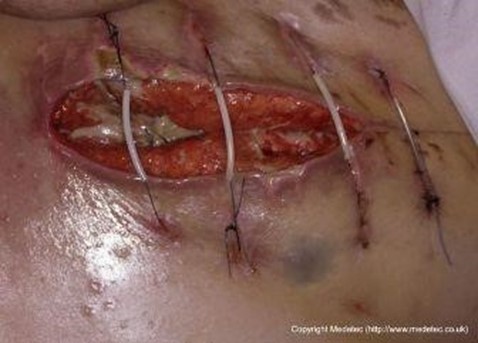A nurse is preparing to feed a newly admitted client who has dysphagia.
Which of the following actions should the nurse plan to take?
Talk with the client during her feeding.
Discourage the client from coughing during feedings
I nstruct the client to lift her chin when swallowing
Sit at or below the client’s eye level during feedings
The Correct Answer is D
The correct answer is choice D. Sit at or below the client’s eye level during feedings.
This action helps the client feel more comfortable and less intimidated by the nurse. It also allows the nurse to observe the client’s swallowing and signs of aspiration more easily.
Choice A is wrong because talking with the client during her feeding can distract her from swallowing properly and increase the risk of aspiration.
The nurse should encourage the client to focus on eating and avoid conversation until the feeding is over.
Choice B is wrong because discouraging the client from coughing during feedings can prevent her from clearing her airway and expelling any food particles that might have entered the trachea.
The nurse should monitor the client for coughing, choking, or changes in voice quality, which are indicators of aspiration.
Choice C is wrong because instructing the client to lift her chin when swallowing can actually make swallowing more difficult and increase the risk of aspiration.
The nurse should instruct the client to tuck her chin when swallowing, which helps close off the trachea and direct food into the esophagus.
Nursing Test Bank
Naxlex Comprehensive Predictor Exams
Related Questions
Correct Answer is C
Explanation

Wound dehiscence can lead to infection, bleeding, and evisceration (protrusion of internal organs through the incision). The nurse should report this finding to the provider immediately and cover the wound with a sterile dressing moistened with sterile saline solution.
Choice A is wrong because mild swelling under the sutures near the incisional line is a normal finding in the early stages of wound healing. It does not indicate infection or dehiscence unless accompanied by other signs such as redness, warmth, pain, or purulent drainage.
Choice B is wrong because crusting of exudate on the incisional line is also a normal finding that indicates the formation of a scab.
A scab protects the wound from infection and helps it heal faster. The nurse should not remove the scab unless instructed by the provider.
Choice D is wrong because pink-tinged coloration on the incisional line is another normal finding that shows healthy granulation tissue.
Granulation tissue is new tissue that fills in the wound and helps it close. It is usually pink or red and moist.
The nurse should follow these general tips for postoperative abdominal incision care:
- Always wash your hands before and after touching your incisions.
- Inspect your incisions and wounds every day for signs your healthcare provider has told you are red flags or concerning.
- Look for any bleeding.
If the incisions start to bleed, apply direct and constant pressure to the incisions.
- Avoid wearing tight clothing that might rub on your incisions.
- Try not to scratch any itchy wounds.
- You can shower starting 48 hours after your operation but no scrubbing or soaking of the abdominal wounds in a tub.
- After the initial dressing from the operating room is removed, you can leave the wound open to air unless there is drainage or you feel more comfortable with soft gauze covering the wound.
- Surgical glue (Indermil) will fall off over a period of up to 2-3 weeks.
Do not put any topical ointments or lotions on the incisions.
- Do not rub over the incisions with a washcloth or towel.
- No tub baths, hot tubs, or swimming until evaluated at your clinic appointment.
Correct Answer is B
Explanation
Choice A Reason:
Urine specific gravity: The specific gravity of 1.035 indicates concentrated urine and might be indicative of dehydration. However, the nurse should address this finding by encouraging increased fluid intake before reporting it to the provider.
Choice B Reason:
Prealbumin: The prealbumin level is 25 mg/dL. Prealbumin is a marker of nutritional status and can indicate the adequacy of protein intake and overall nutritional status. A level of 25 mg/dL is relatively low, which may suggest malnutrition or insufficient protein intake. This finding should be reported to the provider so that appropriate interventions can be initiated to address the client's nutritional needs.
Choice C Reason:
Temperature: The temperature is not mentioned in the provided information. If the temperature is within the normal range, there is no need to report it to the provider.
Choice D Reason:
Blood pressure: The blood pressure is not mentioned in the provided information. If the blood pressure is within the normal range, there is no need to report it to the provider.
It's important for the nurse to critically assess the client's medical record and prioritize the findings that require immediate attention or intervention. In this case, the low prealbumin level indicates a potential nutritional issue that needs to be addressed promptly. The nurse should communicate this finding to the healthcare provider to ensure appropriate management and care for the client.
Whether you are a student looking to ace your exams or a practicing nurse seeking to enhance your expertise , our nursing education contents will empower you with the confidence and competence to make a difference in the lives of patients and become a respected leader in the healthcare field.
Visit Naxlex, invest in your future and unlock endless possibilities with our unparalleled nursing education contents today
Report Wrong Answer on the Current Question
Do you disagree with the answer? If yes, what is your expected answer? Explain.
Kindly be descriptive with the issue you are facing.
